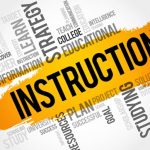Interactivity is a key aspect of eLearning. It can help to engage learners, making the learning process more enjoyable and effective. There are different types of interactivity that you can use in your learning and assessment resources. Here are some examples:
Type 1: Active Interactivity
This type of interactivity requires the learner to take some action in order to move on to the next piece of content, lesson, or assessment. For example, clicking on a link or button, answering a question, solving problems, or completing a task.
Active interactivity is generally more engaging than other types of interactivity because it forces the learner to be actively involved in the learning process. However, it can also be more confusing and frustrating if the learner doesn’t understand what they are supposed to do.
Type 2: Passive Interactivity
This type of interactivity allows the learner to access and consume content without taking any action. For example, watching a video, reading a text or listening to an audio recording.
Passive interactivity is generally less confusing and frustrating than active interactivity because the learner doesn’t have to do anything. However, it can be less engaging because the learner is not actively involved in the learning process.
Type 3: Collaborative Interactivity
This type of interactivity involves two or more learners working together to complete a task. For example, working on a project together or completing a quiz as a team. This could involve discussions, group projects, or other activities that require collaboration. Collaborative interactivity is a great way to promote social and emotional learning and to encourage students to think critically about the material.
Collaborative interactivity is generally more engaging than other types of interactivity because it encourages social interaction and teamwork. However, it can also be more confusing and frustrating if the learners are not working well together.
Type 4: Constructivist Interactivity
This type of interactivity requires the learner to construct their own understanding of the content. For example, by making connections between different pieces of information or by applying what they have learned to a real-world situation. This could involve activities such as experiments, simulations, or other hands-on tasks. Constructivist interactivity is a great way to promote deep learning and understanding.
Constructivist interactivity is generally more effective than other types of interactivity because it allows the learner to build their own knowledge and understanding. However, it can be more confusing and frustrating if the learner doesn’t know where to start or what to do.
When designing electronic materials, it is important to consider which type of interactivity will be most effective for the learner. Active, passive, and collaborative interactivity are generally more engaging, while constructivist interactivity is generally more effective. However, all types of interactivity have advantages and disadvantages, so it is important to choose the right type for each situation.







